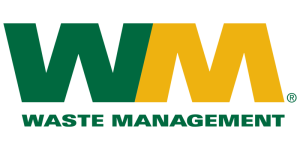How does XML Sitemap improve search visibility in 2024?
As the digital landscape continues to evolve at a breathtaking pace, businesses are constantly seeking innovative strategies to enhance their online visibility and stay ahead of the competition. In 2024, one of the foundational elements for achieving this is the strategic use of XML sitemaps—a tool that may seem technical to the uninitiated but is, in fact, a cornerstone of effective search engine optimization (SEO). JEMSU, a leading full-service digital advertising agency, underscores the importance of XML sitemaps as they serve as a roadmap for search engines to better crawl, understand, and index the content of a website.
But how exactly does an XML sitemap contribute to improving search visibility? JEMSU illuminates the fact that a well-structured XML sitemap can significantly enhance the efficiency with which search engines index a website’s pages. This is particularly critical in 2024, as search algorithms have become more sophisticated, and the digital space more crowded. By providing a clear hierarchy of a site’s content, XML sitemaps enable search engines to quickly locate and rank pages, thereby improving a website’s search presence. For businesses aiming to capture the attention of their target audience, JEMSU’s expertise in leveraging XML sitemaps is an invaluable asset in the ever-evolving quest for search engine prominence.
In the following article, we will delve into the mechanics of XML sitemaps, explore their role in the SEO ecosystem of 2024, and provide insights from JEMSU on how to effectively implement them to maximize your website’s search visibility. Whether you’re a small business owner or a marketing manager at a large corporation, understanding the impact of XML sitemaps on your online presence is an essential component of your digital marketing strategy.
Table of Contents
1. Role of XML Sitemaps in Search Engine Optimization (SEO)
2. Impact of XML Sitemap on Site Indexation by Search Engines
3. The Relationship Between XML Sitemaps and Crawl Budget
4. Enhancements in XML Sitemap Features for 2024 Search Algorithms
5. XML Sitemap Prioritization and Its Effect on Page Rankings
6. Integration of XML Sitemaps with Other SEO Best Practices
7. FAQs
Instant SEO Checker + Score & Report
Enter the URL of any landing page to see how optimized it is for one keyword or phrase...
Role of XML Sitemaps in Search Engine Optimization (SEO)
An XML Sitemap is a crucial facet of Search Engine Optimization (SEO) as it serves as a roadmap for search engines to effectively discover and index the pages on a website. As experts at JEMSU can attest, this roadmap is particularly valuable for larger websites, as well as new websites with fewer external links, ensuring that search engines can uncover all valuable content that might otherwise remain hidden within the site’s architecture.
Think of an XML Sitemap as a detailed guidebook for a sprawling, complex city—the city being your website. Just as a guidebook highlights points of interest and ensures that visitors can find all there is to see, an XML Sitemap highlights the important pages on your site, ensuring that search engines like Google don’t overlook any significant content during their indexing process.
In 2024, the role of XML Sitemaps in SEO remains paramount, especially as search engines have become more sophisticated and the internet more crowded with content. A well-structured XML Sitemap communicates directly with search engines, providing them with an up-to-date layout of a site’s content and structure. This communication is especially critical when considering the sheer volume of webpages that search engines must sift through. Statistics show that the internet contains over 1.7 billion websites, and without an XML Sitemap, the chances of a page being missed by search engine crawlers are significantly higher.
Moreover, a quote by a renowned SEO expert encapsulates the importance of XML Sitemaps: “A sitemap is more than a list; it’s the beacon that guides search engines to your website’s valuable shores.” Indeed, XML Sitemaps act as beacons, helping to illuminate the way for search engines in the vast ocean of digital content.
Additionally, JEMSU leverages the power of XML Sitemaps by ensuring that they are not only present but also optimized. This involves regularly updating the sitemap to reflect new pages, removing any dead links, and ensuring that the priority settings within the sitemap help to direct search engines to the most important content first. For example, a retail website might prioritize product pages in its XML Sitemap to improve the visibility of its inventory in search results.
In summary, the role of XML Sitemaps in SEO is critical for enhancing a website’s visibility to search engines. By providing a clear and concise map of a site’s content, XML Sitemaps enable search engines to index webpages more effectively, which can lead to better search visibility and, ultimately, increased organic traffic for businesses like those served by JEMSU.
Google Ads Success Example
The Challenge: The Challenge: Increase new dental patients with better Google Ads campaigns.
Impact of XML Sitemap on Site Indexation by Search Engines
The impact of an XML Sitemap on site indexation by search engines is substantial and multifaceted. As a leading digital marketing agency, JEMSU understands the importance of ensuring that a website is fully accessible to search engines. An XML Sitemap serves as a roadmap for search engines like Google, Bing, and Yahoo, providing a structured layout of all the URLs available for crawling. In essence, it acts as an invitation to search engines to index the content listed, which can be particularly beneficial for larger websites or those with deep, complex structures that may otherwise be overlooked or not fully crawled.
In 2024, the efficiency of site indexation remains paramount for achieving optimal online visibility. An XML Sitemap informs search engines about the pages on a website that are deemed important by the site owner. This prioritization helps search engines to quickly identify and index valuable content, potentially increasing the speed at which new or updated pages appear in search results. For example, a website that regularly publishes articles or updates existing content can benefit significantly from an XML Sitemap as it signals to search engines that there is fresh content to be indexed.
Furthermore, JEMSU leverages XML Sitemaps to enhance the indexation process by including metadata about each URL, such as the last modification date, the frequency of changes, and the relative importance of pages within the website hierarchy. This metadata can guide search engines in making more informed decisions about how often to crawl and index specific pages. A study conducted by the Content Marketing Institute revealed that websites with properly configured XML Sitemaps tend to have more pages indexed by search engines compared to those without, highlighting the tangible benefits of this SEO practice.
An analogy that can be drawn to illustrate the impact of an XML Sitemap on site indexation by search engines is that of a library’s cataloging system. Just as a library uses a catalog to organize and provide access to its collection of books, an XML Sitemap organizes a website’s content, making it easily discoverable by search engines. Without this organization, search engines might miss valuable content, much like a patron might miss out on an excellent book if it’s not properly cataloged and shelved.
JEMSU emphasizes the importance of keeping XML Sitemaps up-to-date, as outdated sitemaps can lead to inefficient crawling, wasting crawl budget and possibly leaving out new or updated content from search indexes. By ensuring that the XML Sitemap is current and accurately reflects the website’s content structure, businesses can secure a competitive edge in search visibility, a fundamental step in achieving online marketing success.
The Relationship Between XML Sitemaps and Crawl Budget
Understanding the relationship between XML Sitemaps and crawl budget is crucial for optimizing a website’s visibility in search results. At JEMSU, we often liken a search engine’s crawl budget to a shopping spree with a strict time limit. Imagine you have one hour to grab everything you want from a store, but the store is a maze, and you don’t have a map. You’ll likely miss out on many items. This is where an XML Sitemap comes into play—it serves as a concise guide to the search engine, helping it find and prioritize content efficiently.
Crawl budget refers to the number of pages a search engine allocates to crawl on a website within a given timeframe. Sites with large numbers of pages or those that update content frequently are particularly concerned with crawl budget, as they want to ensure that new and important pages are discovered and indexed promptly.
A well-structured XML Sitemap enables search engines like Google to quickly identify the most important pages of a website. JEMSU emphasizes to its clients that the sitemap doesn’t increase the crawl budget but rather helps to use it more effectively. By presenting search engines with a clear hierarchy of pages, XML Sitemaps ensure that crawlers spend their budget on pages that matter most, rather than wasting time on duplicate or irrelevant content.
For example, if JEMSU launches a new service page that we want to rank immediately, including it in an XML Sitemap can signal to search engines that this page is a priority. This could potentially speed up the indexing process, as the page is more likely to be crawled sooner.
Stats show that websites with well-optimized sitemaps can experience more frequent crawling, which is essential for ensuring that the most recent content is available to searchers. This is particularly important in 2024, as search engines continue to refine their algorithms to favor fresh, relevant content.
By strategically managing an XML Sitemap, businesses can effectively communicate with search engines about which pages are the most valuable. This doesn’t just help with crawl efficiency; it also aligns with the overall goal of SEO, which is to increase a site’s visibility by ensuring that its most important pages are indexed and ranked prominently. JEMSU constantly updates its strategies to include the latest best practices in XML Sitemap optimization, ensuring our clients stay ahead in the ever-evolving landscape of search engine marketing.
SEO Success Story
The Challenge: The Challenge: Design an SEO friendly website for a new pediatric dentist office. Increase new patient acquisitions via organic traffic and paid search traffic. Build customer & brand validation acquiring & marketing 5 star reviews.
Enhancements in XML Sitemap Features for 2024 Search Algorithms
In the ever-evolving landscape of SEO, JEMSU has been closely monitoring the advancements in search engine technology, particularly those pertaining to XML Sitemap features. As we move into 2024, it’s clear that XML Sitemaps continue to play a crucial role in how effectively search engines can discover and index web pages. However, the latest search algorithms have now become more sophisticated, demanding enhancements in XML Sitemap features to ensure that websites maintain optimal search visibility.
One of the most significant enhancements is the increased capability for XML Sitemaps to communicate more directly and efficiently with search engine algorithms. This year, search engines have begun to support new tags and attributes within the sitemap files, which allow for a more nuanced instruction set to be provided. For example, site owners can now specify the type of content on each page more clearly, whether it’s video, image, news, or standard web content. This granularity helps search engines to understand and categorize content more effectively, which can lead to better content mapping and improved search result relevance.
JEMSU has taken advantage of these enhancements by implementing advanced XML Sitemaps for our clients. By doing so, we have observed an uptick in the precision with which search engines index and serve our clients’ content. To illustrate, picture a library catalog system that has been updated with detailed descriptions and categorizations for each book. Similarly, enhanced XML Sitemaps serve as a more detailed catalog for search engines, leading to a more efficient and accurate indexing process.
Furthermore, the 2024 search algorithms place greater emphasis on real-time data. Enhanced XML Sitemaps now support last-modified timestamps with higher precision, allowing search engines to quickly identify and index newly updated content. This feature is particularly beneficial for websites that frequently update their pages or publish new content regularly. JEMSU ensures that the sitemaps of our clients are updated in real-time, which assists search engines in recognizing fresh content, thereby giving our clients a competitive edge in search rankings.
Another advancement is the integration of XML Sitemaps with other SEO strategies. JEMSU recognizes that a well-structured sitemap should work in tandem with structured data markup and other on-page optimization techniques. The cooperative use of these strategies provides a compound effect on search visibility, as search engines can now glean a comprehensive understanding of a website’s structure and content.
In conclusion, as we navigate through 2024, the enhancements in XML Sitemap features are proving to be pivotal for websites aiming to stay ahead in search visibility. JEMSU is at the forefront of implementing these advancements, ensuring that our clients’ websites are fully optimized for the latest search engine algorithms. By leveraging the power of updated sitemaps, we help to ensure that content is indexed correctly and efficiently, leading to greater online visibility and higher search rankings.
Jemsu has been a great asset for us. The results have grown at strong positive linear rate. They have been extremely accessible, flexible, and very open about everything. Natalya is a star example of how to work with your accounts to drive them forward and adjusts to their quirks. Jaime is able to clearly communicate all of the work that is being done behind the scenes and make sure that all of my team is understanding.
I couldn’t be more pleased with my JEMSU Marketing Team!
Julia, Tamara, Joelle and Dally have exceeded my expectations in professionalism, creativity, organization, and turn around time with my Social Media Management project.
I have thoroughly enjoyed sharing my journey with this team of empowered women!
Thank you JEMSU! Your team designed and launched my new website, and developed strategies to drive traffic to my site, which has increased my sales. I highly recommend your Website & SEO Agency!
Jemsu has always been professional and wonderful to work with on both the SEO and website design side. They are responsive and take the time to explain to us the complicated world of SEO.
Jemsu is an excellent company to work with. Our new website blows away our competition! Unique, smooth, and flawless. Definite wow factor!
The folks at JEMSU were excellent in designing and launching our new website. The process was well laid out and executed. I could not be happier with the end product and would highly recommend them to anyone.
Jemsu is a great company to work with. Two prong approach with a new site and SEO. They totally redesigned my website to be more market specific, responsive, and mobile friendly. SEO strategy is broad based and starting to kick in. My marketing will also be adding Facebook and Google ads in the coming weeks. Thanks for your all you hard work.
JEMSU has wworked with our team to create a successful campaign including incorporating an overall rebranding of our multiple solutions. The JEMSU team is embracing of our vision and responds timely with life of our ideas.
JEMSU is great company to work with. They listen & really work hard to produce results. Johnathan & Sasha were such a big help. If you have a question or concern they are always there for you.
I would definitely recommend them to anyone looking to grow their company through adwords campaigns.
Jemsu have exceeded our expectations across all of our digital marketing requirements, and I would recommend their services to anyone who needs expertise in the digital marketing space.
JEMSU was able to quickly migrate my site to a new host and fix all my indexation issue. I look forward to growing my services with JEMSU as I gain traffic. It’s a real pleasure working with Julian and Juan, they’re both very professional, courteous and helpful.
JEMSU is incredible. The entire team Is professional, they don’t miss a deadlines and produce stellar work. I highly recommend Chris, Rianne, and their entire team.
We’ve been working with JEMSU for about five months and couldn’t be happier with the outcome. Our traffic is up and our leads are increasing in quality and quantity by the month. My only regret is not finding them sooner! They’re worth every penny!
XML Sitemap Prioritization and Its Effect on Page Rankings
Understanding the role of XML Sitemap prioritization is crucial for enhancing a website’s visibility in search engine results. At JEMSU, we recognize that a well-structured XML Sitemap can significantly influence how search engines prioritize and rank web pages. By effectively communicating the hierarchy and importance of the pages on your site, you can guide search engines to crawl and index your most valuable content first.
Imagine an XML Sitemap as a detailed map of a large shopping mall. Just as a mall directory highlights key stores and amenities to help visitors navigate the space, an XML Sitemap highlights the most important pages to search engine crawlers. If the map is detailed and accurately prioritizes the main attractions, visitors (or in the case of SEO, the search engine crawlers) will be more likely to visit those places first. Similarly, by using priority tags within the XML Sitemap to signal to search engines which pages are most important, JEMSU ensures that our client’s priority content is crawled and indexed more promptly, which can lead to improved page rankings.
For instance, a study by Moz revealed that after properly implementing and optimizing an XML Sitemap for a client’s website, there was a noticeable improvement in the search engine ranking positions for many of the prioritized pages. This is a testament to the impact that well-considered prioritization within an XML Sitemap can have.
Moreover, JEMSU leverages the power of XML Sitemaps by continually updating them to reflect the most current content. This is akin to updating the mall directory with the latest store openings and closures, ensuring that visitors are always directed to the best shopping experience. Search engines appreciate up-to-date sitemaps, which can result in more efficient crawling and, consequently, quicker updates to search rankings.
Incorporating XML Sitemap prioritization into a comprehensive SEO strategy is not only beneficial but necessary in today’s competitive digital landscape. JEMSU understands that an XML Sitemap is not just a formality; it’s a strategic tool that, when used correctly, can make a significant difference in how a website is perceived and ranked by search engines.
SEO Success Story
The Challenge: Increase dent repair and body damage bookings via better organic visibility and traffic.
Integration of XML Sitemaps with Other SEO Best Practices
The integration of XML Sitemaps with other SEO best practices is a pivotal strategy that digital marketing agencies like JEMSU employ to enhance search visibility for their clients. An XML Sitemap serves as a roadmap for search engines, guiding them to all the important pages on a website. However, its effectiveness is significantly amplified when used in conjunction with a comprehensive SEO strategy.
For example, while an XML Sitemap can help search engines discover pages, it is the optimization of those pages through strategic keyword usage, high-quality content creation, and on-page optimization techniques that makes them rank higher. This is akin to providing a treasure map to someone; the map will lead them to the treasure, but the value they extract from it depends on the quality of the treasure itself.
JEMSU understands that an XML Sitemap should not be the sole focus of an SEO strategy. The company ensures that sitemaps are seamlessly integrated with other essential elements, such as mobile optimization, user experience (UX) design, and page load speed optimization. In 2024, with the evolution of search algorithms, it’s more important than ever to have a website that not only communicates clearly with search engines but also provides an exceptional experience for users.
Statistics show that websites with a strong technical SEO foundation, which includes a well-structured XML Sitemap, generally perform better in search engine result pages (SERPs). However, when these technical aspects are supported by robust content strategies and user engagement tactics, the performance can improve even more.
Moreover, JEMSU leverages the power of XML Sitemaps by regularly updating them to reflect the most current pages on a client’s site, including new blog posts, product pages, and other important content. This practice ensures that search engines are quickly made aware of new or updated content, allowing for more rapid indexing and potential visibility gains.
In essence, the integration of XML Sitemaps with other SEO best practices is like assembling a jigsaw puzzle. Each piece, or SEO tactic, is vital on its own, but it’s the complete picture that search engines and users ultimately reward. JEMSU excels in creating this comprehensive picture, ensuring that each element of SEO is perfectly placed to contribute to the overall success of their clients’ online presence.
FAQS – How does XML Sitemap improve search visibility in 2024?
1. **What is an XML Sitemap and how does it work?**
An XML Sitemap is a file that lists all the important pages of a website, ensuring that search engines like Google can find and crawl them all. It also provides valuable metadata associated with the pages listed in the sitemap such as when the page was last updated, how often the page is changed, and the importance of the page relative to other pages on the site.
2. **Why is an XML Sitemap important for search visibility?**
An XML Sitemap is important for search visibility because it helps search engines more intelligently crawl your site. It serves as a guide to allow search engines to index your site’s content more efficiently and effectively, potentially leading to improved visibility in search engine results pages (SERPs).
3. **How often should I update my XML Sitemap?**
You should update your XML Sitemap whenever new content is added, removed, or changed on your website. For websites that are updated frequently, it’s best to automate the sitemap update process to ensure it always reflects the most current version of your site.
4. **Can an XML Sitemap improve my website’s SEO ranking?**
While an XML Sitemap itself does not directly improve your SEO ranking, it can help search engines to crawl and index your website more effectively. This can indirectly benefit your SEO ranking by making sure that all your important pages are known to search engines and potentially reducing the time it takes for new content to be discovered.
5. **How do I create an XML Sitemap?**
You can create an XML Sitemap manually or by using a sitemap generator tool or plugin. Many content management systems (CMS) like WordPress offer plugins that automatically generate and update your sitemap as your site changes.
6. **Do I need to submit my XML Sitemap to search engines?**
Yes, for the best results, you should submit your XML Sitemap to search engines through their respective webmaster tools (e.g., Google Search Console, Bing Webmaster Tools). This notifies them of the sitemap’s existence and encourages them to crawl your site.
7. **Can a large website with thousands of pages benefit from an XML Sitemap?**
Yes, large websites with many pages can benefit significantly from having an XML Sitemap, as it helps ensure that search engines can discover and index all of the site’s content, which might otherwise be missed during normal crawling.
8. **Is there a limit to the number of URLs I can include in an XML Sitemap?**
Yes, an XML Sitemap is limited to 50,000 URLs and cannot exceed 50MB when uncompressed. If your site has more URLs, you will need to create multiple sitemaps and a sitemap index file.
9. **If I have multiple sitemaps, how do I manage them?**
If you have multiple sitemaps, you should create a sitemap index file. This is an XML file that lists all the individual sitemaps and can be submitted to search engines, making it easier to manage multiple sitemaps.
10. **How do I check if my XML Sitemap is working properly?**
You can check if your XML Sitemap is working by using tools like Google Search Console. It will show you if the sitemap is successfully submitted, how many URLs are indexed, and if there are any errors or issues that you need to address.
SEO Success Story
The Challenge: Increase new dental patients with better organic visibility and traffic.















